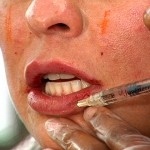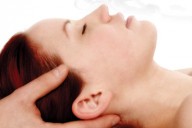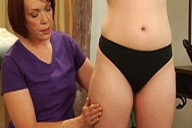NonSurgical Facial Restoration
0During the past 10 years, great strides have been made in the field of nonsurgical facial restoration, and estheticians must be aware of these new techniques in order to advise and educate their clients. The modern esthetician should be a source of knowledge for their clients and develop a working relationship with a facial cosmetic surgeon, general cosmetic surgeon or cosmetic dermatologist.
Advances in skin care
As people grow older, two factors contribute to an aged look: a decreasing amount of fat, which results in the loss of contour; and the loss of collagen and elastin, which contributes to wrinkling. Known as lipoatrophy, this decrease causes a reduction of facial fullness, contour and shape.
Some of the most significant advances in skin care include the introduction of low-pH nonbuffered glycolic  acid and tretinoin. Because tretinoin is contained in prescription medications and is out of the realm of esthetics, the focus of this article will be on low-pH nonbuffered glycolic acid.
acid and tretinoin. Because tretinoin is contained in prescription medications and is out of the realm of esthetics, the focus of this article will be on low-pH nonbuffered glycolic acid.
Low-pH nonbuffered glycolic acid. There have been more than 10,000 scientific and medical papers written on the efficacy of glycolic acid. I personally have conducted several clinical trials and written a number of papers on this topic. Low-pH nonbuffered glycolic acid has been proven to eliminate the appearance of fine lines and wrinkles, enhance collagen and elastin production, and even out skin discoloration. Many estheticians have used high-pH buffered glycolic products, and, because of this, they have not seen these great results. Glycolic treatments should be administered both as in-spa treatments and as home-care regimens. Because a client sees their esthetician only once or twice per month, home-care products are a necessity.
Fillers and muscle paralyzers
The next step in facial rejuvenation is to refer the client to a cosmetic surgeon. Physicians have several tools available that can be broken down into temporary injectable fillers, semipermanent injectable fillers and muscle paralyzers.
Bovine collagen was the first filler, featuring results that last two to three months. Its major disadvantage is that the patient has to be skin tested twice for allergic reactions throughout a two-month period before use. Side effects include redness and bruising at the injection site.
Human cadaver dermis and fascia were the next available fillers. These last a little longer, but few patients want cadaver skin to be injected into their faces. Side effects include redness and bruising at the injection site.
Next came fat injections. The patient’s own fat is harvested from their abdomen or hip area, and injected into the face. This lasts between six and 12 months. Side effects include redness, calcium deposition, bruising and fat breakdown at the injection site.
The most recent filler is hyaluronic acid. This is a natural skin component made from bacterial cultures that is hydroscopic and attracts water to the area, resulting in a skin-plumping effect. This lasts from six to nine months, and side effects include redness, bruising, swelling and pain at the injection site.
There are two semipermanent fillers available: calcium hydroxylapatite and poly-l-lactic acid, which last one to two years. Side effects include temporary redness, bruising and nodules at the injection site. Recent studies suggest that a combination of hyaluronic acid and calcium hydroxylapatite works better than the individual products alone.
An entirely different approach to facial rejuvenation involves the use of botulinum toxin type A—a purified medical-grade extract made from the toxin of the bacteria Clostridium botulinum. When injected into a muscle, it paralyzes it for three to four months. Subsequent treatments can last up to six months. Facial areas that can be treated include the forehead and frown lines, crow’s-feet, and neck bands. Side effects include bruising and redness.
Knowledge equals retention
Many nonsurgical options are available to make people appear younger without having to undergo an invasive procedure. Estheticians must have knowledge of these new techniques in order to better advise and retain their clients.
Dr. Dolores Kent, M.D. goes over various types of injectables and fillers in the 2 new educational movies from Aesthetic VideoSource. She shows how to inject Restylane, how to inject Juvederm, Radiesse Injections and Botox Injection Techniques. Stop by their website and watch free video excerpts.



